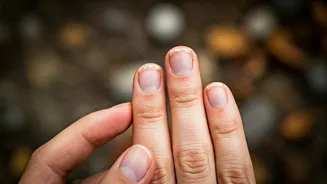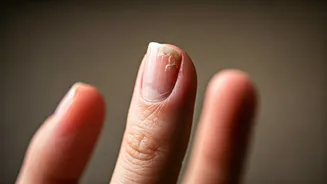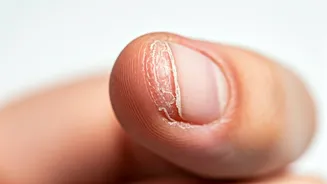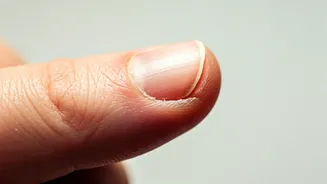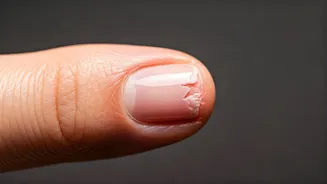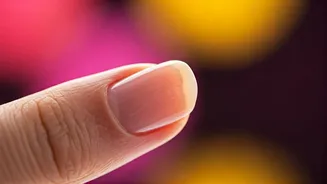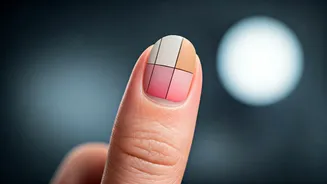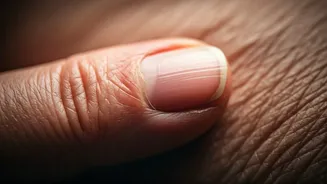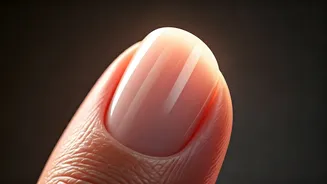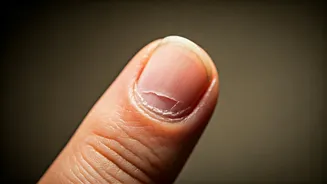Nail Peeling Explained
Nail peeling, a common condition, can be attributed to various factors. It's often more than just a cosmetic concern, potentially indicating underlying
health issues or lifestyle choices. The structure of the nails, composed of multiple layers of keratin, can be affected by internal or external factors, leading to peeling. Understanding the causes is essential for effective treatment. External factors include frequent exposure to water, harsh chemicals in cleaning products or nail polish removers, and physical trauma. Internal factors can be linked to nutritional deficiencies, fungal infections, or medical conditions like thyroid disorders or psoriasis. Recognizing these elements enables a targeted approach to remedies and prevention.
Medical Issues Identified
Several medical conditions can manifest as peeling nails. One of the most common is fungal nail infection, which weakens the nail structure, causing it to peel and become brittle. Psoriasis, a skin condition, can affect the nail bed, leading to abnormal nail growth and peeling. Thyroid disorders, both hyperthyroidism and hypothyroidism, can also impact nail health, causing them to become thin, dry, and prone to peeling. Other conditions, such as iron deficiency anemia, can affect nail strength, making them more susceptible to peeling. Consulting a healthcare professional is crucial for accurate diagnosis, particularly if you observe additional symptoms such as changes in nail color, thickness, or shape, or if the peeling is accompanied by pain or discomfort.
Home Remedies Explored
Numerous home remedies can help strengthen and repair peeling nails. One effective approach involves moisturizing the nails regularly. Applying a rich moisturizer or cuticle oil several times daily can help hydrate the nails and the surrounding skin, minimizing dryness and promoting flexibility. Another helpful remedy is to avoid harsh chemicals. When doing household chores or applying nail polish, consider wearing gloves to safeguard nails from damage. Ensure that you maintain a balanced diet rich in essential nutrients like biotin, which is known to promote healthy nail growth, and include foods like eggs, nuts, and sweet potatoes. Additionally, keeping nails trimmed short can help minimize snagging and peeling. Gently filing your nails in one direction can also help prevent splitting.
Preventive Measures Outlined
Taking proactive steps can help prevent nail peeling. One of the primary measures is maintaining good nail hygiene. Keeping nails clean and dry helps to prevent fungal infections, which are a common cause of peeling. Avoid biting or picking at your nails, as these habits can weaken them and promote peeling. When using nail polish or nail polish remover, choose products that are free of harsh chemicals like formaldehyde and toluene, which can dry out nails. Protecting your hands and nails during activities like gardening or cleaning can prevent physical damage. Moreover, using a nail hardener, which can help reinforce the nail structure, reducing the likelihood of peeling. Regularly moisturizing the nails helps maintain their flexibility and helps prevent dryness and breakage.
Dietary Support Strategies
Nutrition plays a critical role in maintaining healthy nails. Ensuring your diet includes adequate amounts of essential vitamins and minerals can significantly improve nail strength and prevent peeling. Biotin, a B-vitamin, is vital for nail health and can be found in eggs, nuts, and avocados. Protein is also essential as it is a fundamental building block of nails. Include protein-rich foods such as lean meats, fish, and legumes. Iron deficiency can cause brittle nails, so incorporating iron-rich foods like spinach and lentils is important. Zinc, which supports nail growth, can be found in foods like pumpkin seeds and oysters. Consider consulting with a healthcare professional or a registered dietitian to determine if you have any nutritional deficiencies and to tailor a diet plan that is right for you.
Professional Treatments Explained
While home remedies can be effective, some cases of nail peeling may require professional medical attention. If you suspect a fungal infection, a doctor can prescribe antifungal medications, either topical or oral, to eliminate the infection. For cases linked to underlying medical conditions like psoriasis or thyroid disorders, treatment will be focused on managing these conditions. A dermatologist may offer treatments such as medicated nail polish or procedures to promote healthy nail growth. Professional advice is particularly necessary if the peeling is severe, accompanied by pain, or shows signs of infection. Professional treatments often include a diagnosis of the underlying causes, and a personalized treatment plan designed to address the specific cause of the nail peeling and restore nail health.
